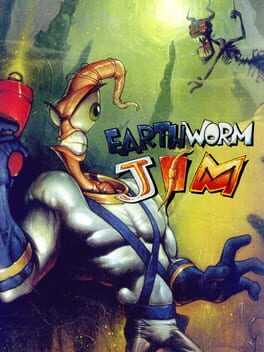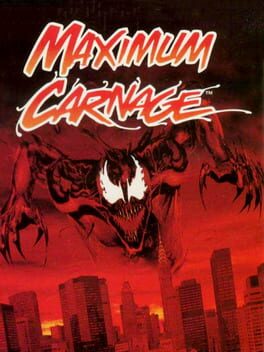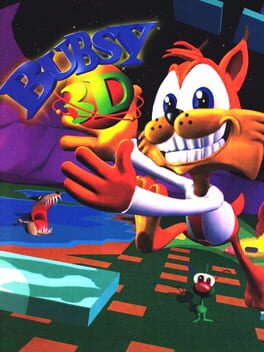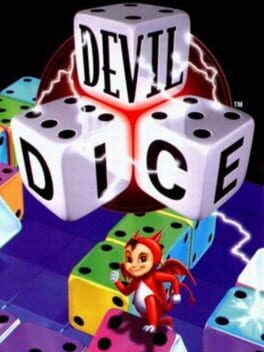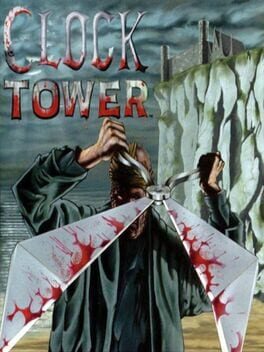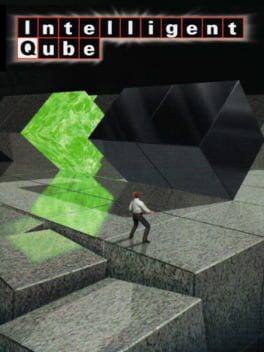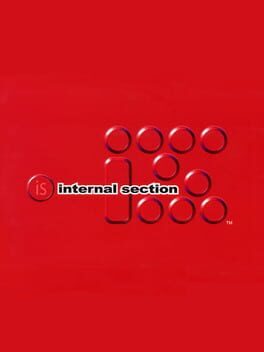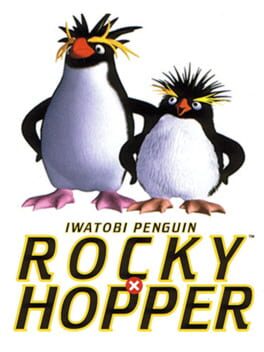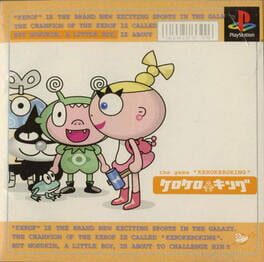galactichole
1994
1993
2000
one of the ways I know I strongly like a game is when it genuinely feels like it's rotting my brain because it keeps invading my mind when I'm doing other tasks. this is one of those games.
bit tricky for me to describe, but the basic premise is that you rotate blocks so that all of the marked sides are touching marked sides of other blocks. your goal is to form closed shapes, and doing so causes all of the blocks in that shape to disappear. bigger shapes earn you more points, and so does forming multiple shapes next to each other in rapid succession. and oh my god is this game addicting.
there's a few modes of gameplay you can choose from. there's ポタポタ/Potapota (trickling/drop by drop) mode in which blocks will continuously fall, forcing you to combine them to disappear before the screen gets filled and it's game over. next is ギッシリ/Gisshiri (tightly packed) mode, where you're given a full screen of blocks to form shapes. this is your time attack mode, where you have 90 seconds to rack up as many points as possible. finally you have パズル/Puzzle mode which contains lots of individual stages that each challenge you to create combos in order to clear out all of the blocks. Potapota and Gisshiri modes allow you to play by yourself or against a computer/second player.
really hard to not compare this game to tetris, and I would be willing to say I have equally as much fun with both of them (a difficult task for any puzzle game like this to reach). it's a shame there's so little information/apparent knowledge of this game out there, as it's one I encourage checking out!
these rotating blocks are going to appear in my dreams tonight I just know it
bit tricky for me to describe, but the basic premise is that you rotate blocks so that all of the marked sides are touching marked sides of other blocks. your goal is to form closed shapes, and doing so causes all of the blocks in that shape to disappear. bigger shapes earn you more points, and so does forming multiple shapes next to each other in rapid succession. and oh my god is this game addicting.
there's a few modes of gameplay you can choose from. there's ポタポタ/Potapota (trickling/drop by drop) mode in which blocks will continuously fall, forcing you to combine them to disappear before the screen gets filled and it's game over. next is ギッシリ/Gisshiri (tightly packed) mode, where you're given a full screen of blocks to form shapes. this is your time attack mode, where you have 90 seconds to rack up as many points as possible. finally you have パズル/Puzzle mode which contains lots of individual stages that each challenge you to create combos in order to clear out all of the blocks. Potapota and Gisshiri modes allow you to play by yourself or against a computer/second player.
really hard to not compare this game to tetris, and I would be willing to say I have equally as much fun with both of them (a difficult task for any puzzle game like this to reach). it's a shame there's so little information/apparent knowledge of this game out there, as it's one I encourage checking out!
these rotating blocks are going to appear in my dreams tonight I just know it
1996
1998
1996
was REALLY close to giving up on this one after the agonizingly slow first 20 minutes, but once the first scissorman encounter happened I was immediately hooked. the general obscurity of the mansion in particular was a bit frustrating, and the way incredibly minor changes/talking to a character one extra time can cause completely different endings (especially within the last few moments) is a little ridiculous.
overall, a definite slow-burner, but one that I think is worth checking out
overall, a definite slow-burner, but one that I think is worth checking out
1997
1999
1997
as much as I love the PS1's library of unconventional, hangout-able-space games, this one was a bit of a letdown from how long it's been boiling in the back of my mind. while this game scratches that itch of exploring intriguing environments, the overall feel of this game just didn't click with me as much as I had expected it to. the almost random-chance feeling for movement is neat, though it often led me to piloting my balloon very high up in order to go a direction I hadn't been in yet and not being able to fully appreciate my surroundings. that adds a bit to the mystique of the land I suppose, though overall the existence of aquanaut's holiday serves to replace any interest I would have in coming back to this one.
2000
1985
Super Mario Bros. Truly a game that needs no introduction.
The successor to the 1983 arcade game Mario Bros. and the first game in the Super Mario series, it was first released in 1985 for the Famicom in Japan. Following a limited US release for the NES, it was ported to international arcades for the Nintendo Vs. System in early 1986. The NES version received a wide release in North America that year and in PAL regions in 1987.
Players control Mario, or his brother Luigi in the multiplayer mode, as they traverse the Mushroom Kingdom to rescue Princess Toadstool from King Koopa (later named Bowser). They traverse side-scrolling stages while avoiding hazards such as enemies and pits with the aid of power-ups such as the Super Mushroom, Fire Flower, and Starman.
The game was designed by Shigeru Miyamoto and Takashi Tezuka as "a grand culmination" of the Famicom team's three years of game mechanics and programming, drawing from their experiences working on Devil World and the side-scrollers Excitebike and Kung Fu to advance their previous work on platforming "athletic games" such as Donkey Kong and Mario Bros. The design of the first level, World 1-1, serves as a tutorial for platform gameplay.
Super Mario Bros. is frequently cited as one of the greatest video games of all time, and is particularly admired for its precise controls. It is one of the bestselling games of all time, with more than 58 million copies sold worldwide. It is credited alongside the NES as one of the key factors in reviving the video game industry after the 1983 crash, and helped popularize the side-scrolling platform game genre. Koji Kondo's soundtrack is one of the earliest and most popular in video games, making music a centerpiece of game design. The game began a multimedia franchise including a long-running game series, an animated television series, a Japanese anime feature film, a live-action feature film and an American animated feature film. It has been re-released on most Nintendo systems. Mario and Super Mario Bros. have become prominent in popular culture.
In Super Mario Bros., the player controls Mario, the protagonist of the series. Mario's brother, Luigi, is controlled by the second player in the game's multiplayer mode and assumes the same plot role and functionality as Mario. The objective is to race through the Mushroom Kingdom, survive the main antagonist Bowser's forces, and save Princess Toadstool. It is a side-scrolling platform game where the player moves to the right to reach the flagpole at the end of each level.
The game world includes coins for Mario to collect and special bricks marked with a question mark (?), which when hit from below by Mario may reveal more coins or a special item. Other "secret", often invisible, bricks may contain more coins or rare items. If the player gains a Super Mushroom, Mario grows to double his size and gains the ability to break bricks above him. If Mario gets hit in this mode, then instead of dying he turns back to regular Mario. Players start with a certain number of lives and may gain additional lives by picking up green spotted orange 1-up mushrooms hidden in bricks, or by collecting 100 coins, defeating several enemies in a row with a Koopa shell, or bouncing on enemies successively without touching the ground. Mario loses a life if he takes damage while small, falls in a bottomless pit, or runs out of time. The game ends when the player runs out of lives, although a button input can be used on the game over screen to continue from the first level of the world in which the player died.
Mario's primary attack is jumping on top of enemies, though many enemies have differing responses to this. For example, a Goomba will flatten and be defeated, while a Koopa Troopa will temporarily retract into its shell, allowing Mario to use it as a projectile. These shells may be deflected off a wall to destroy other enemies, though they can also bounce back against Mario, which will hurt or kill him. Other enemies, such as underwater foes and enemies with spiked tops, cannot be jumped on and damage the player instead. Mario can also defeat enemies above him by jumping to hit the brick that the enemy is standing on. Mario may also acquire the Fire flower from certain "?" blocks that when picked up changes the color of Super Mario's outfit and allows him to throw fireballs. A less common item is the Starman, which often appears when Mario hits certain concealed or otherwise invisible blocks. This item makes Mario temporarily invincible to most hazards and capable of defeating enemies on contact.
The game consists of eight worlds with four sub-levels called "stages" in each world. The final stage of each world takes place in a castle where Bowser is fought above a suspension bridge; the first seven of these Bowsers are "false Bowsers" who are actually minions disguised as him, whilst the real Bowser is found in the 8th world. Bowser and his decoys are defeated by jumping over them and reaching the axe on the end of the bridge, although they can also be defeated using a Fire Flower. The game also includes some stages taking place underwater, which contain different enemies. In addition, there are bonuses and secret areas in the game. Most secret areas contain more coins for Mario to collect, but some contain "warp pipes" that allow Mario to advance directly to later worlds in the game without completing the intervening stages. After completing the game once, the player is rewarded with the ability to replay the game with changes made to increase its difficulty, such as all Goombas in the game being replaced with Buzzy Beetles, enemies similar to Koopa Troopas who cannot be defeated using the Fire Flower.
Following the events of Mario Bros., the game is set in the fantasy land of the Mushroom Kingdom after Mario had arrived through a clay pipe from New York City.
In the Mushroom Kingdom, a tribe of turtle-like creatures known as the Koopa Troopas invade the kingdom and uses the magic of its king, Bowser, to turn its inhabitants, known as the Mushroom People, into inanimate objects such as bricks, stones and horsehair plants. Bowser and his army also kidnap Princess Toadstool, the princess of the Mushroom Kingdom and the only one with the ability to reverse Bowser's spell. After hearing the news, Mario sets out to save the princess and free the kingdom from Bowser. After traveling through various parts of the kingdom and fighting Bowser's forces along the way, Mario reaches Bowser's final stronghold, where he is able to defeat him by striking an axe on the bridge suspended over lava he is standing on, breaking the bridge, defeating Bowser, freeing the princess and saving the Mushroom Kingdom.
The successor to the 1983 arcade game Mario Bros. and the first game in the Super Mario series, it was first released in 1985 for the Famicom in Japan. Following a limited US release for the NES, it was ported to international arcades for the Nintendo Vs. System in early 1986. The NES version received a wide release in North America that year and in PAL regions in 1987.
Players control Mario, or his brother Luigi in the multiplayer mode, as they traverse the Mushroom Kingdom to rescue Princess Toadstool from King Koopa (later named Bowser). They traverse side-scrolling stages while avoiding hazards such as enemies and pits with the aid of power-ups such as the Super Mushroom, Fire Flower, and Starman.
The game was designed by Shigeru Miyamoto and Takashi Tezuka as "a grand culmination" of the Famicom team's three years of game mechanics and programming, drawing from their experiences working on Devil World and the side-scrollers Excitebike and Kung Fu to advance their previous work on platforming "athletic games" such as Donkey Kong and Mario Bros. The design of the first level, World 1-1, serves as a tutorial for platform gameplay.
Super Mario Bros. is frequently cited as one of the greatest video games of all time, and is particularly admired for its precise controls. It is one of the bestselling games of all time, with more than 58 million copies sold worldwide. It is credited alongside the NES as one of the key factors in reviving the video game industry after the 1983 crash, and helped popularize the side-scrolling platform game genre. Koji Kondo's soundtrack is one of the earliest and most popular in video games, making music a centerpiece of game design. The game began a multimedia franchise including a long-running game series, an animated television series, a Japanese anime feature film, a live-action feature film and an American animated feature film. It has been re-released on most Nintendo systems. Mario and Super Mario Bros. have become prominent in popular culture.
In Super Mario Bros., the player controls Mario, the protagonist of the series. Mario's brother, Luigi, is controlled by the second player in the game's multiplayer mode and assumes the same plot role and functionality as Mario. The objective is to race through the Mushroom Kingdom, survive the main antagonist Bowser's forces, and save Princess Toadstool. It is a side-scrolling platform game where the player moves to the right to reach the flagpole at the end of each level.
The game world includes coins for Mario to collect and special bricks marked with a question mark (?), which when hit from below by Mario may reveal more coins or a special item. Other "secret", often invisible, bricks may contain more coins or rare items. If the player gains a Super Mushroom, Mario grows to double his size and gains the ability to break bricks above him. If Mario gets hit in this mode, then instead of dying he turns back to regular Mario. Players start with a certain number of lives and may gain additional lives by picking up green spotted orange 1-up mushrooms hidden in bricks, or by collecting 100 coins, defeating several enemies in a row with a Koopa shell, or bouncing on enemies successively without touching the ground. Mario loses a life if he takes damage while small, falls in a bottomless pit, or runs out of time. The game ends when the player runs out of lives, although a button input can be used on the game over screen to continue from the first level of the world in which the player died.
Mario's primary attack is jumping on top of enemies, though many enemies have differing responses to this. For example, a Goomba will flatten and be defeated, while a Koopa Troopa will temporarily retract into its shell, allowing Mario to use it as a projectile. These shells may be deflected off a wall to destroy other enemies, though they can also bounce back against Mario, which will hurt or kill him. Other enemies, such as underwater foes and enemies with spiked tops, cannot be jumped on and damage the player instead. Mario can also defeat enemies above him by jumping to hit the brick that the enemy is standing on. Mario may also acquire the Fire flower from certain "?" blocks that when picked up changes the color of Super Mario's outfit and allows him to throw fireballs. A less common item is the Starman, which often appears when Mario hits certain concealed or otherwise invisible blocks. This item makes Mario temporarily invincible to most hazards and capable of defeating enemies on contact.
The game consists of eight worlds with four sub-levels called "stages" in each world. The final stage of each world takes place in a castle where Bowser is fought above a suspension bridge; the first seven of these Bowsers are "false Bowsers" who are actually minions disguised as him, whilst the real Bowser is found in the 8th world. Bowser and his decoys are defeated by jumping over them and reaching the axe on the end of the bridge, although they can also be defeated using a Fire Flower. The game also includes some stages taking place underwater, which contain different enemies. In addition, there are bonuses and secret areas in the game. Most secret areas contain more coins for Mario to collect, but some contain "warp pipes" that allow Mario to advance directly to later worlds in the game without completing the intervening stages. After completing the game once, the player is rewarded with the ability to replay the game with changes made to increase its difficulty, such as all Goombas in the game being replaced with Buzzy Beetles, enemies similar to Koopa Troopas who cannot be defeated using the Fire Flower.
Following the events of Mario Bros., the game is set in the fantasy land of the Mushroom Kingdom after Mario had arrived through a clay pipe from New York City.
In the Mushroom Kingdom, a tribe of turtle-like creatures known as the Koopa Troopas invade the kingdom and uses the magic of its king, Bowser, to turn its inhabitants, known as the Mushroom People, into inanimate objects such as bricks, stones and horsehair plants. Bowser and his army also kidnap Princess Toadstool, the princess of the Mushroom Kingdom and the only one with the ability to reverse Bowser's spell. After hearing the news, Mario sets out to save the princess and free the kingdom from Bowser. After traveling through various parts of the kingdom and fighting Bowser's forces along the way, Mario reaches Bowser's final stronghold, where he is able to defeat him by striking an axe on the bridge suspended over lava he is standing on, breaking the bridge, defeating Bowser, freeing the princess and saving the Mushroom Kingdom.
1998
